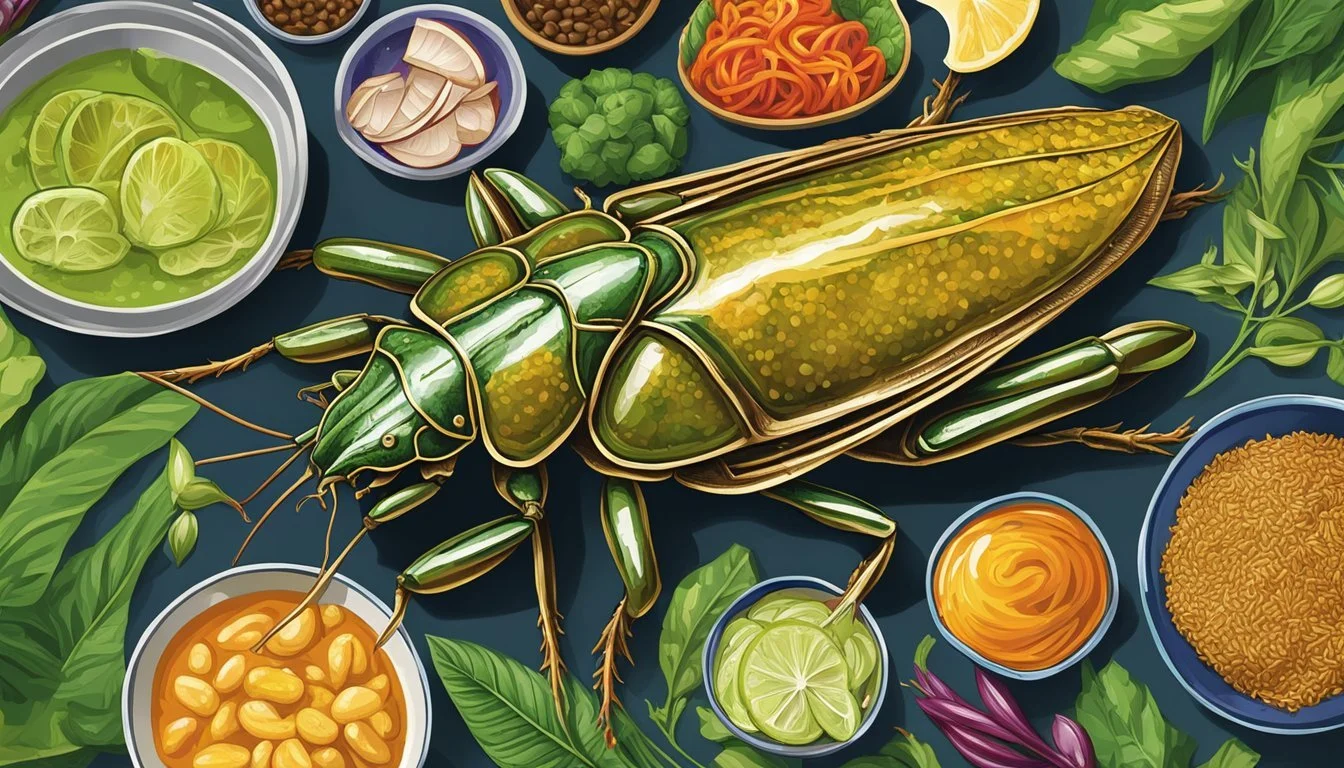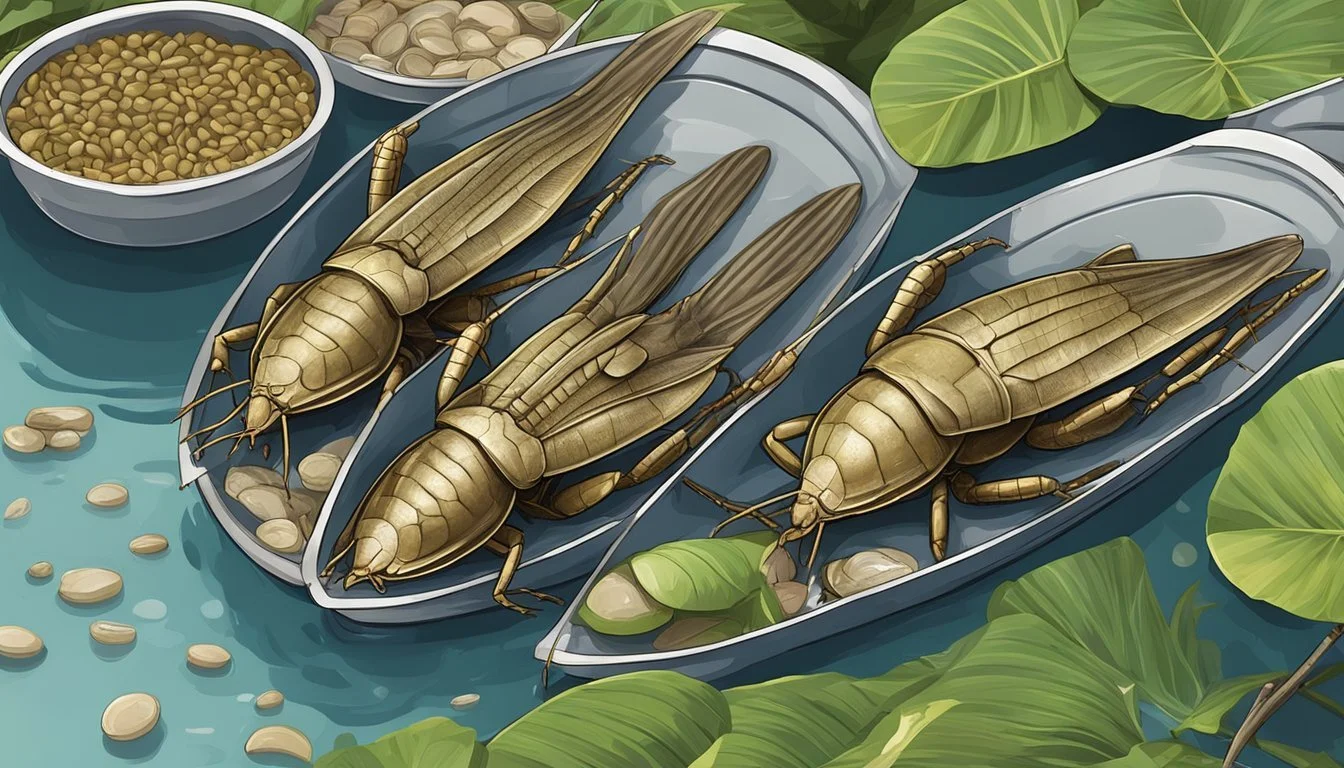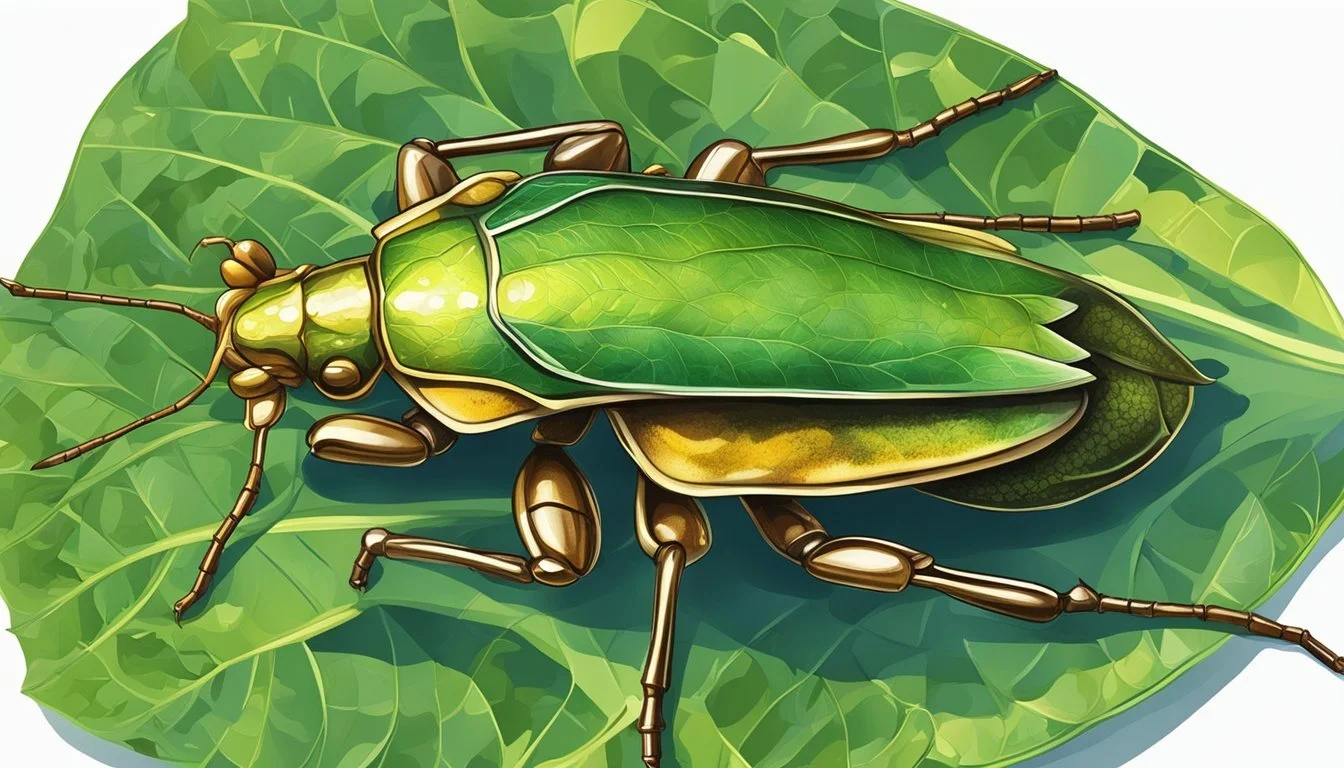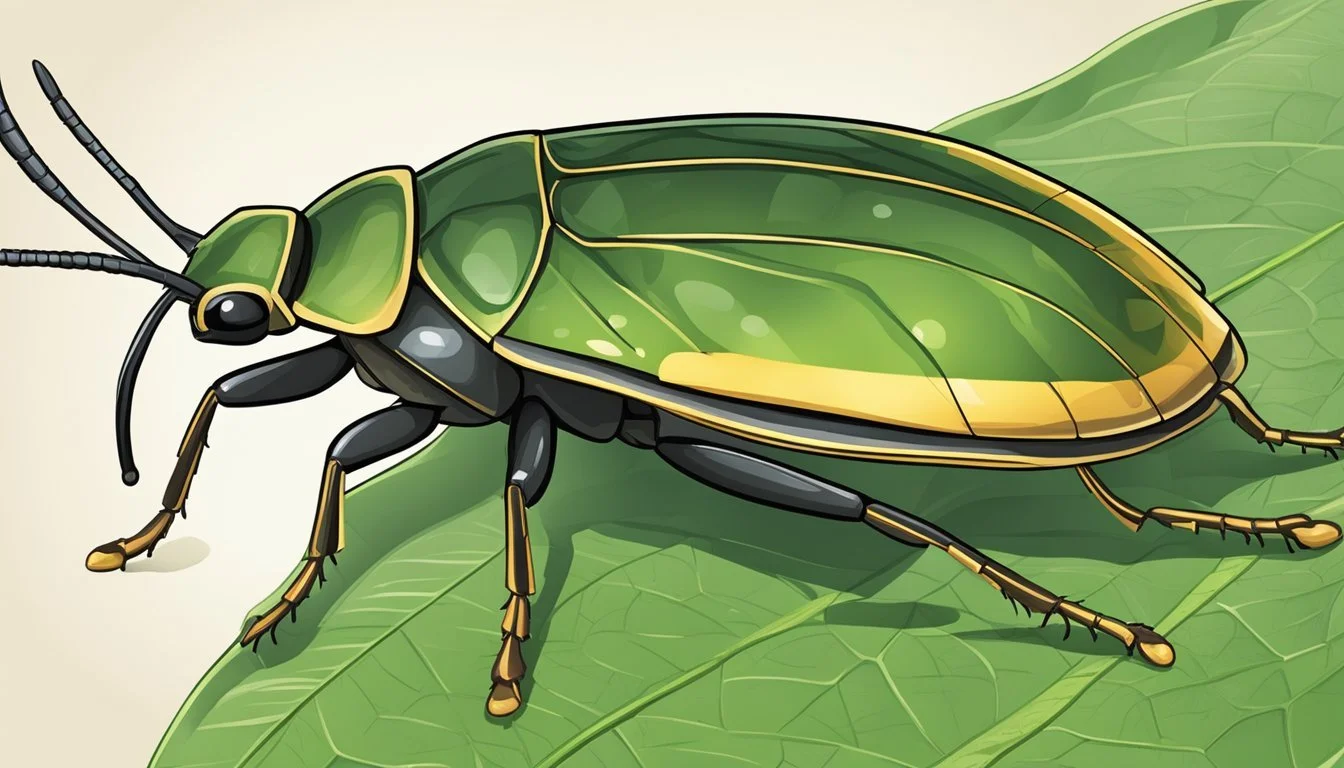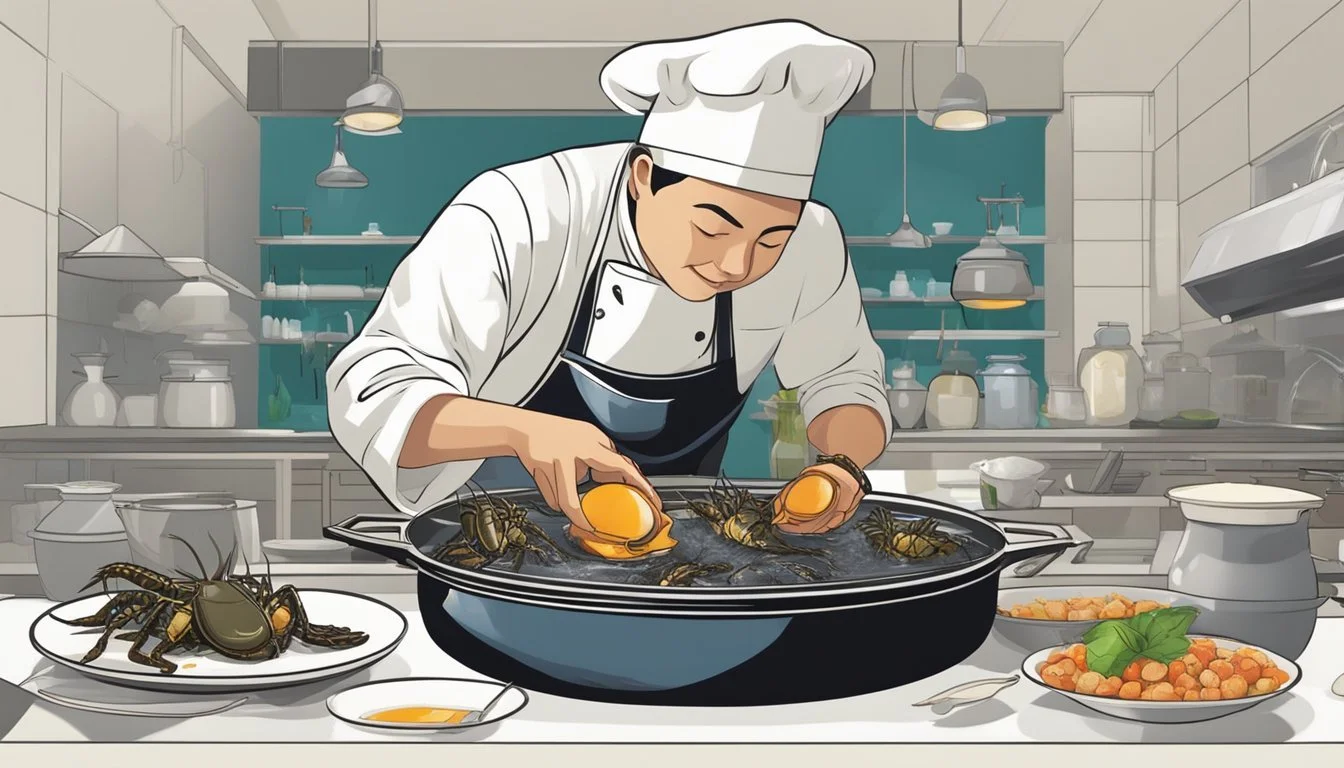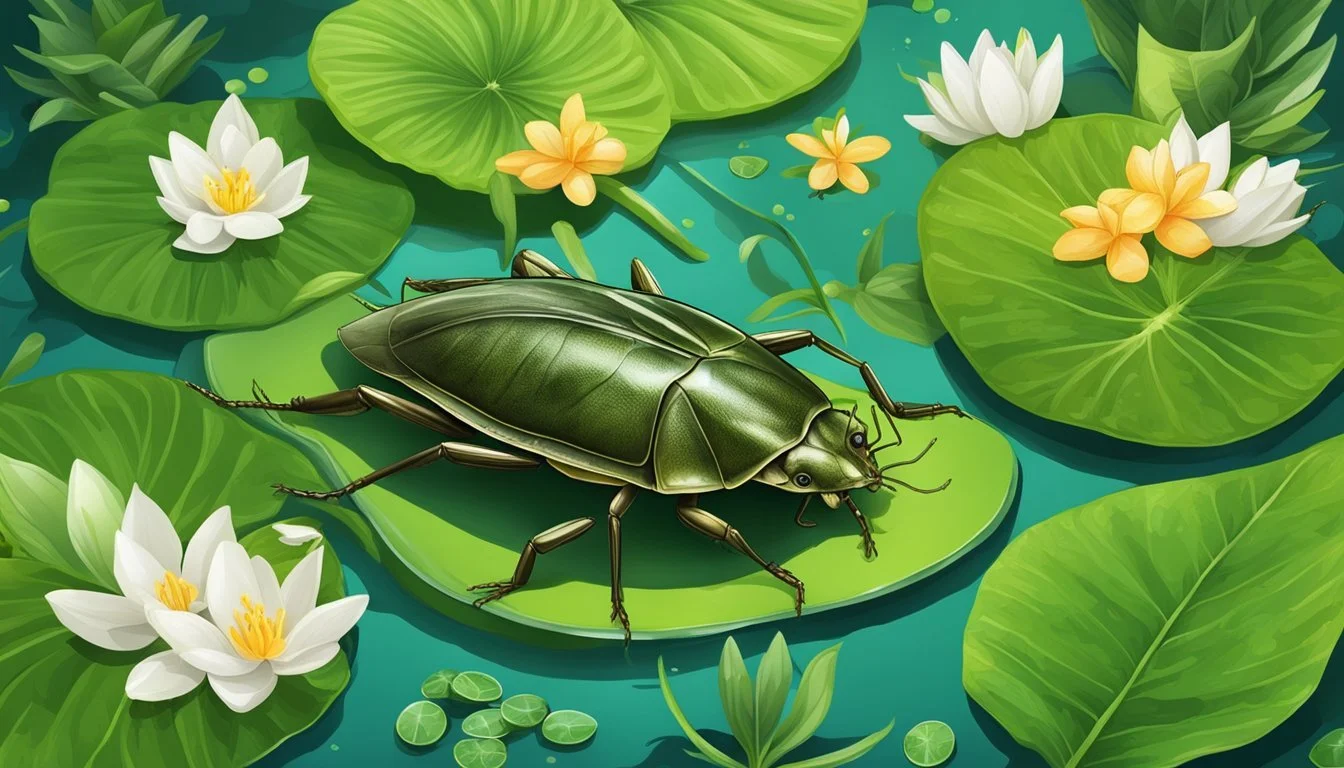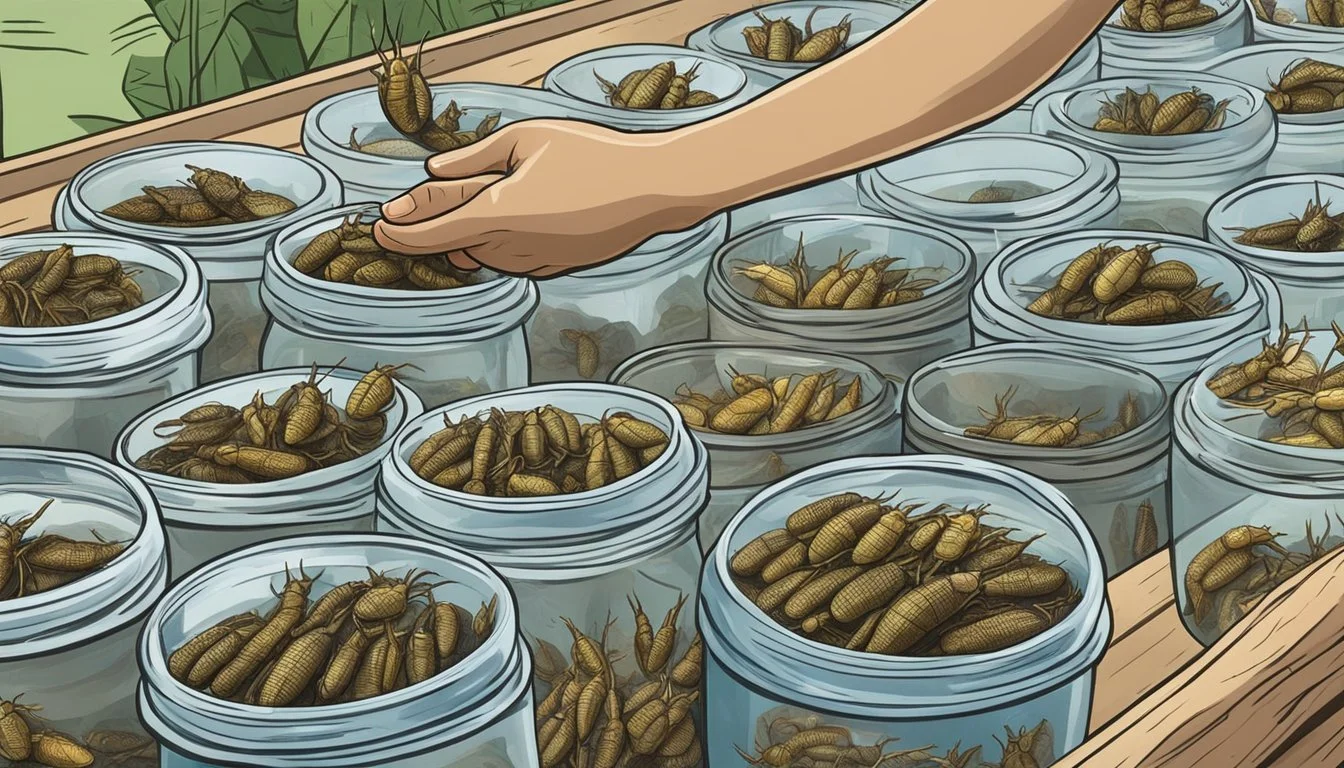Giant Water Bug
Unveiling the Bold Flavor Secret in Thai Cuisine
In the culinary repertoire of Thailand, the Giant Water Bug plays an undeniably distinct role. Known locally as "Maeng Da" or "แมงดา," this substantial insect is a traditional delicacy that imparts a unique flavor profile to various Thai dishes. Its potent essence is often extracted to create nam phrik maeng da—a chili paste intensified by the bug's characteristic taste. The use of Giant Water Bugs is a testament to the diversity and resourcefulness of Thai cuisine, wherein even insects are transformed into coveted ingredients that offer a burst of umami and aromatic allure to sauces and pastes.
The incorporation of Giant Water Bugs into Thai cooking is not merely a novelty but a well-established custom that showcases an understanding of local biodiversity. Chefs and home cooks alike carefully select and prepare these insects to enhance their creations. In the Western world, they might be considered an unconventional ingredient, yet in Thailand, they are a beloved source of flavor, adding a 'punch' to dishes. The bugs are typically prepared by first removing their inedible parts; then they are either fried until crispy or pounded to release their rich, savory juices which are then stirred into pastes and sauces.
The resulting flavor enhancement can be striking, with depth and intensity that is difficult to replicate with other ingredients. While the Giant Water Bug may initially seem like an odd choice for food preparation, its culinary value in Thai cuisine cannot be overstated. Their essence imparts a piquant edge to pastes and sauces, distinguishing Thai dishes with a full-bodied taste that captures the essence of the cultural heritage and the ingenuity of its people's use of local ingredients.
What Is a Giant Water Bug?
The Giant Water Bug, member of the family Belostomatidae, represents a group of large insects found in aquatic environments. Known scientifically as Lethocerus indicus, it is among the most sizeable insects living in water. Typically, these creatures measure up to 3 inches in length and are often referred to by various names such as "water scorpions" or "toe biters" due to their imposing pincers and tendency to deliver a powerful bite.
Physical Characteristics:
Size: About 3 inches long
Appearance: Resembling a cross between a cockroach and a praying mantis, with a flat and elongated body
Wings: Equipped with tough, inedible wings often removed before consumption
Habitat: They are inhabitants of the rice fields in Southeast Asia and capture the fascination of many due to their role in culinary practices—particularly in Thailand.
Culinary Importance:
Usage: Mainly used as a flavoring agent in Thai cuisines
Preparation: Consumed whole, boiled, or deep-fried, but their essence is also extracted for sauces
These bugs are a delicacy and a sought-after ingredient for pastes and sauces, owing to their unique scent—which is particularly potent in males. This distinctive fragrance contributes a punch to traditional pastes and sauces such as nam prig, thereby enhancing the flavor profile of these dishes. Their presence is not just in the wild; they are also reared and sold for culinary use, making them more than just an occasional treat.
Giant Water Bug in Thai Cuisine
In the diverse world of Thai cuisine, the Giant Water Bug, known locally as Mang Da or Maeng Da, stands out as both an ingredient and snack, imparting unique flavors especially in pastes and sauces.
Culinary Uses
The Giant Water Bug is highly esteemed in Thai cooking for its ability to add a distinct flavor and essence to various dishes. The extract, often referred to as nam prik maeng da, is a powerful flavoring agent. Chefs typically remove the inedible parts, such as wings, before crushing the bug to obtain its aromatic liquid. This extract is likened to a pungent fish sauce but carries its unique profile.
Key Extractables:
Proteinous body fluids are used for their robust flavor
Aromatic essence contributes to the Thai flavor profile
Popular Dishes
Nam Prik Maeng Da is a notable dish where the Giant Water Bug plays a star role. This spicy chili paste incorporates the bug's extract, offering an intense flavor loved in the Northeast region of Thailand. It serves not only as a culinary additive but also as a protein-rich snack, which can be found boiled, fried, or roasted in Thai street food stalls.
Dishes Featuring Mang Da:
Nam Prik: A spicy and savory sauce often enhanced with Maeng Da essence
Snacks: Deep-fried or roasted bugs, enjoyed for their crunch and flavor
The Giant Water Bug's contribution to Thai cuisine reflects the region's innovation in utilizing local resources to create flavors that define Southeast Asian cooking.
Harvesting and Preparation
The Giant Water Bug, known as Maeng Da in Thai, is a significant culinary component in Thai cuisine. Farmers traditionally harvest these insects from rice fields, employing unique techniques that ensure the distinctive flavor is preserved for Thai pastes and sauces.
Catching Techniques
Farmers employ nets to catch the Giant Water Bugs at night, a method that coincides with the bug's natural activity period. The insects are attracted to light sources, which is a common luring technique used to guide them into the nets. This harvesting method is sustainable and preserves the delicate ecosystem of the rice fields where the bugs thrive.
Cooking Methods
Preparation of the Giant Water Bug for cooking involves several steps. First, the inedible wings are removed. In traditional Thai recipes, the bugs can be boiled, steamed, or roasted. However, one of the most popular cooking methods is to deep fry them until crispy, which is often done in a wok with hot oil. They may be seasoned with salt and mixed with other ingredients like garlic and chili to enhance the flavor profile. Another favored technique is to extract the essence of the male bugs which is used to flavor nam prik, a type of spicy chili sauce. This essence is highly valued for its strong scent and contributes a unique taste to various Thai dishes.
Nutritional Value and Benefits
The Giant Water Bug is not only a unique ingredient in Thailand's culinary world but also a nutritionally dense food. It offers substantial amounts of protein, making it a viable alternative to more traditional forms of animal protein. Their protein content is comparable to other conventional meats, which supports muscle repair and growth.
In addition to protein, these insects carry a range of vitamins. They provide Vitamin B12, essential for blood formation and brain function, and other B-complex vitamins that are crucial for metabolism.
Their fat content, while present, consists largely of unsaturated fats. These fats are considered healthier and are important for maintaining good cholesterol levels. Unlike saturated fats found in many red meats, the fats in insects such as the Giant Water Bug are more heart-friendly.
For those looking for healthy snacking options, Giant Water Bugs offer a crunchy alternative. In fried or roasted form, they can satiate the need for a crispy texture without relying on processed snacks.
Here is a brief summary of the nutritional benefits:
High in Protein: Ideal for muscle and tissue repair.
Vitamin Rich: Especially in B-complex vitamins for metabolism and energy.
Healthier Fats: Containing unsaturated fats which support cardiovascular health.
Alternative Snack: A nutritious and satisfying option for those seeking healthier snack choices.
Incorporating Giant Water Bugs into dishes provides not just a unique flavor experience, but also contributes to a balanced diet, offering essential nutrients in a sustainable and low-impact form.
Taste Profile and Sensory Experience
Giant Water Bugs, known as Maeng Da or Mang Da in Thai, are a gourmet ingredient in Thailand, lauded for their capacity to infuse dishes with a unique flavor profile.
Flavor Components
The flavor of Giant Water Bugs is distinctively pungent, with a pronounced savory taste that carries an undertone of fruitiness. This complexity is due to the essence released from the male bugs, often referred to as Mangdana Essence, which is a sought-after flavoring agent in Thai cuisine.
Main Flavor: Savory and pungent
Underlying Notes: Subtle fruitiness
Culinary Usage: Enhances pastes and sauces with its robust essence
Texture and Aroma
The texture of cooked Giant Water Bugs can vary, but they typically offer a crunchy contrast to the pastes and sauces they accentuate. The aroma they emit is striking and can be described as a strong scent that is both earthy and fragrant, providing a multisensory experience to the dishes they are infused with.
Texture: Crunchy when included in dishes
Aroma: Earthy and fragrant, contributing to the overall sensory profile of the cuisine
By integrating these unique sensory properties, Giant Water Bugs play a pivotal role in elevating the depth and complexity of traditional Thai flavors.
Incorporating Giant Water Bugs in Modern Cooking
Giant water bugs, known in Thailand as Maeng Da, offer a distinctive flavor profile highly regarded in Thai cuisine. These insects are notably used in pastes and sauces, contributing a savory punch that's both unique and increasingly popular in food innovation.
Fusion Dishes
In the realm of fusion cuisine, giant water bugs are making their way onto menus that blend traditional Thai flavors with international dishes. Chefs are finding that the pungent, almost citrus-like taste of water bugs complements the flavors in dishes such as tacos, offering a surprising twist on the familiar. For instance:
Tacos with Maeng Da Salsa: Adding a finely chopped giant water bug to a fresh tomato salsa can impart an umami depth to this Mexican staple.
Innovative Recipes
Innovative recipes using giant water bugs are on the rise, reflecting a broader trend towards entomophagy (the practice of eating insects):
Water Bug Infused Aioli: Incorporating a water bug extract into traditional aioli creates a bold flavor suitable for spreading on artisan sandwiches or as a gourmet dip for French fries.
Crispy Water Bug Snacks: Taking a cue from the Thai street food scene, chefs may deep fry these insects and season them with Thai red chili and white pepper for a spicy snack.
These insects, when added to recipes, infuse dishes with an essence that is hard to replicate, embodying food innovation and cultural fusion.
Cultural Significance and Sustainability
Giant water bugs, known as Maeng Da in Thai, hold a place of cultural importance in Thailand. They are more than just an ingredient; they symbolize tradition and sustainability in Thai cuisine. Historically used in regional dishes, these insects are embedded in the culinary practices, often celebrated as a delicacy.
Sustainability is a key advantage of using water bugs in cooking. They require a low initial investment to farm and offer a high yield. As a protein source, they are viewed as an environmentally sustainable alternative to traditional livestock, contributing to a reduced ecological footprint.
The following table outlines the dual significance of giant water bugs in Thai culture:
Cultural Value: Represents hard work and resilience in agricultural life.
Tradition: Integral to regional recipes and celebrations.
Water Bugs as Delicacy: Served as snacks and flavor enhancers in pastes and sauces.
Sustainability: Low-cost farming and high nutritional value.
In Thai cooking, the flavorful essence of the water bug is often extracted and added to pastes and sauces, imbuing them with a distinct character. Their meat is considered a luxury in certain Thai street foods, with many enjoying their rich protein content.
In summation, the giant water bug epitomizes a unique convergence of cultural reverence and modern-day sustainability goals, making it a cherished component of Thailand's food heritage.
Purchasing and Storage
In Thai cuisine, the Giant Water Bug is a unique ingredient renowned for its aromatic contribution to sauces and pastes. Understanding where to find them and how to store them appropriately is crucial to maintain their distinct flavor profile and freshness.
Finding Giant Water Bugs
Giant Water Bugs can often be found in specialized Asian supermarkets or international food markets. They are typically sold frozen or dried and may be found under their Thai name, Maeng Da. When purchasing Giant Water Bugs, one should look for signs of freshness such as intact bodies and the absence of unpleasant odors if they are sold fresh.
Availability:
Fresh: Seasonal, local wet markets in Thailand.
Frozen/Dried: Specialty Asian supermarkets or online stores globally.
Storage Tips
Once purchased, Giant Water Bugs require proper storage to preserve their quality. If they are bought fresh, they should be stored in the refrigerator and consumed within a couple of days. For longer shelf life, they can be stored in the freezer, where they will remain good for several months.
Storage Recommendations:
Refrigerated (Fresh):
Shelf life: 1-2 days
Packaging: Sealed, airtight container
Frozen (Dried/Fresh):
Shelf life: Up to 6 months
Packaging: Freezer-safe, airtight container or bag
To maximize their shelf life and retain the essence characteristic of Giant Water Bugs, they should be kept in a sealed container to protect them from other flavors and odors in the refrigerator or freezer.
Frequently Asked Questions
In this section, the focus is on addressing common health concerns associated with eating Giant Water Bugs and offering suggestions for substitute ingredients that maintain the authentic flavors in Thai dishes.
Health Concerns
When incorporating Giant Water Bugs into cuisine, some individuals may worry about allergies or dietary restrictions. Giant Water Bugs are shellfish, (What wine goes well with shellfish?) and like other shellfish, they may provoke an allergic reaction in some people. They should be avoided by those with known shellfish allergies. With respect to dietary restrictions, these bugs are considered non-vegetarian and are not suitable for vegan or vegetarian diets.
Substitute Ingredients
For those unable to consume Giant Water Bugs due to allergies, dietary preferences, or availability, finding a substitute ingredient with a similar flavor profile is essential. One might consider using shrimp paste or anchovy extract as alternatives, since they provide a comparable umami depth to dishes. However, vegetarians or vegans can opt for fermented tofu (chao) or a mixture of soy sauce and tamarind paste, which can mimic the savory and slightly tangy notes of the water bug essence.
Conclusion
The Giant Water Bug, revered in Thailand for its unique flavor, continues to hold a prestigious position in Thai gastronomy. As an ingredient, it imparts a distinct aroma to pastes and sauces that is often described as irreplaceable by chefs and food enthusiasts alike.
Culinary Scope:
Health-conscious trends: With growing interest in edible insects as sustainable protein sources, Giant Water Bugs may find a broader audience.
Gastronomic experimentation: Adventurous chefs are incorporating the bug's essence into innovative dishes.
Future of Giant Water Bugs:
Sustainable Practices: Efforts to harvest these insects sustainably could shape their availability and popularity.
Cultural Traditions: Their role in Thai cuisine is protected by cultural heritage, ensuring their continued use in traditional recipes.
The culinary future seems to be one in which tradition and innovation coexist, with Giant Water Bugs playing a key role in culinary creativity while remaining a staple in Thai cooking.

